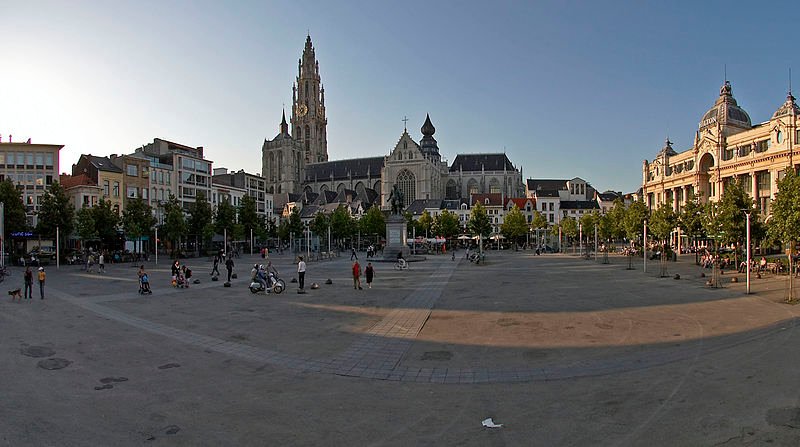 Antwerp, Belgium
Antwerp, BelgiumSource: https://commons.wikimedia.org/wiki/File:Antwerp_Groenplaats_B.jpg
Author: Wouter Hagens

Antwerp, also called Antwerpen in Dutch, is a major city in Belgium. Located on the right bank of the River Scheldt, Antwerp covers 204.51 sq km and has a population of 461,000 (2011 estimate). The city is within a metropolitan area exceeding a million people in population. Antwerp is also the capital of the Antwerp province, located on the northern part of Belgium bordering the Netherlands.
Antwerp today has one of the biggest seaports in Europe, second only to the port of Rotterdam. Port related industries, which range from cargo handling to petrochemical, is the mainstay of the Antwerp economy. The city is also a major diamond trading center. The trade is traditionally controlled by the local Jewish community, although in the past couple of decades, ethnic Indian jewelry traders have also made in-roads in the industry.
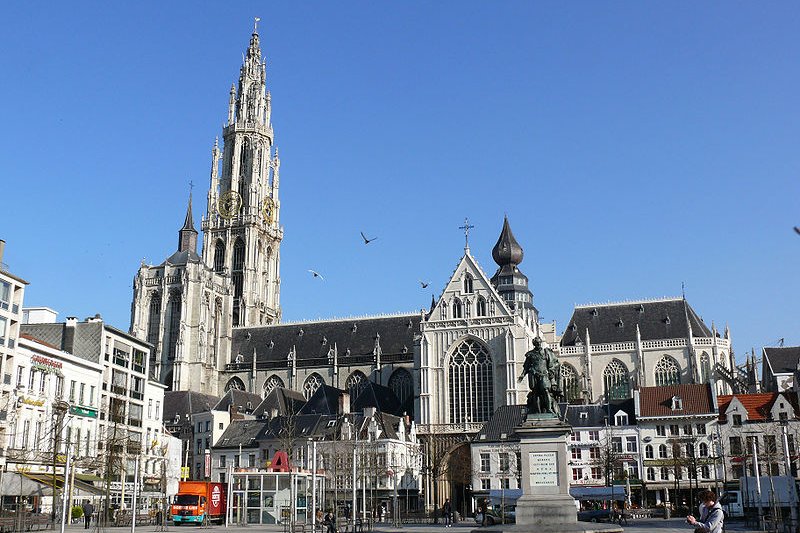 Cathedral of Our Lady (Onze Lieve Vrouwekathedraal), Antwerp
Cathedral of Our Lady (Onze Lieve Vrouwekathedraal), AntwerpSource: https://commons.wikimedia.org/wiki/File:Antwerpen_kathedraal02.jpg
Author: Ad Meskens

The history of Antwerp is intertwined with legend. The name Antwerpen is said to come from the Dutch "hand werpen", which means "to throw the hand away". It is derived from a legend where the young hero Brabo overcome a giant that terrorized the town, cut off its hand and threw it away, into the River Scheldt.
Historical evidence pointed to a settlement in the Antwerp area going back to Gallo-Roman times. Fragments of pottery shards have been discovered here, dating back to the mid-2nd century. The city was converted to Christianity in the 7th century, and by the 10th, the River Scheldt forms the frontier of the Holy Roman Empire.
Antwerp grew in importance in the 16th century, its fortunes contributed partly by the silting of the River Zwin, which brought a decline to its competitor Bruges. By the 1560's, it was the second largest European city north of the Alps.
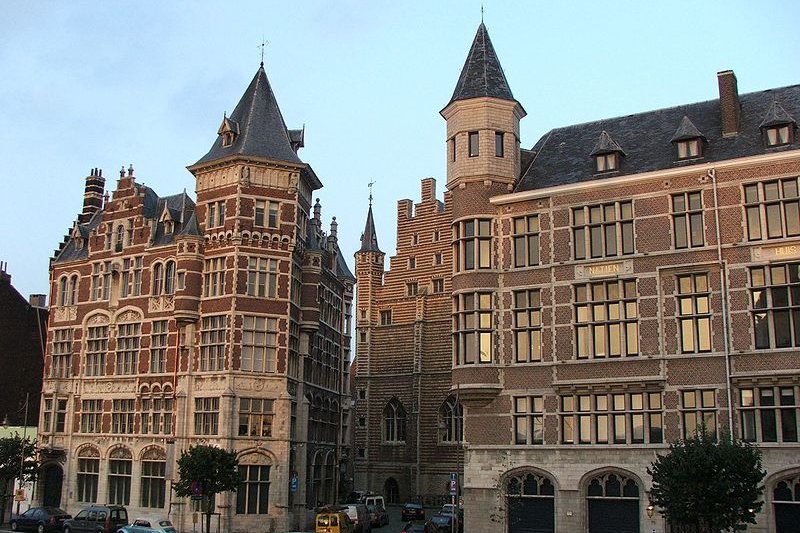 The buildings in Antwerp
The buildings in AntwerpSource: https://commons.wikimedia.org/wiki/File:Antwerp_1_%28Piotr_Kuczynski%29.jpg
Author: Piotr Kuczynski

Religious differences between the Roman Catholics and the Protestants in the Reformation brought riots to the streets of Antwerp in 1566. It also led to the Eighty Years' War, also called the Dutch War of Independence, between the Habsburg Netherlands and the Spanish rule under King Philip II. Antwerp was the capital of the Dutch revolt, which resulted with a Dutch state being recognized under the Treaty of Müster in 1648. However terms of the treaty, which included the closure of the River Schelt to navigation, affected Antwerp negatively until the ban was lifted in 1863.
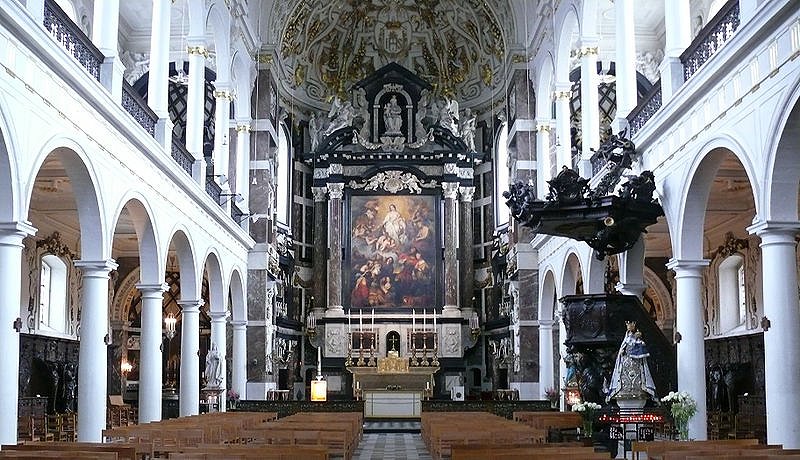 Interior of the Carolus Borromeus Church, Antwerp
Interior of the Carolus Borromeus Church, AntwerpSource: https://commons.wikimedia.org/wiki/File:Carolus_borromeus_interior.jpg
Author: Ad Meskens

Meanwhile, an internal struggle for independence from the Kingdom of the United Netherlands saw the city being captured by Belgian insurgents in 1830. This led to the establishment of the independent Kingdom of Belgium, with Leopard I as king, in 1831.
Answerp hosted the Summer Olympics in 1920. During the Second World War, it was occupied by the Nazis from May 1940 until 4 September, 1944, when it was liberated by the British. Its port suffered much damage from German bombardment, determined to prevent the Allies from using it. The Jewish population of Antwerp, which suffered greatly during the war, rebounded in numbers after the war.
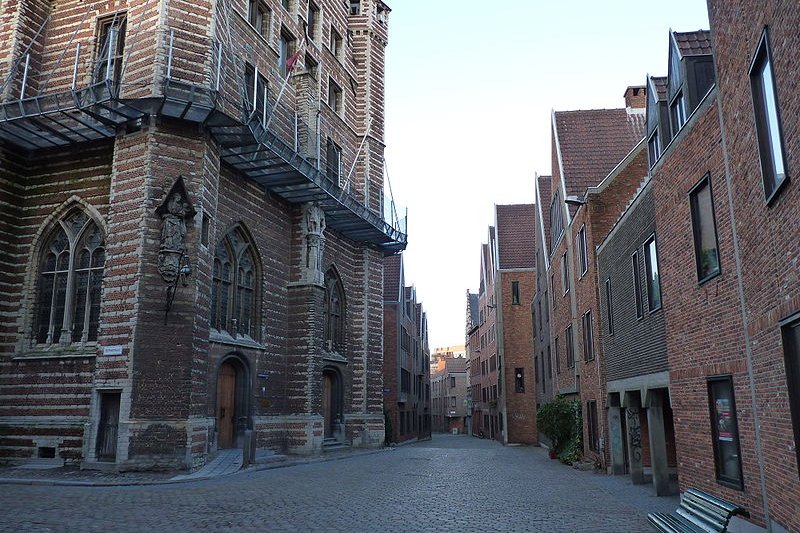 View of Vleeshouwersstraat in Antwerp
View of Vleeshouwersstraat in AntwerpSource: https://commons.wikimedia.org/wiki/File:Antwerp_Building_2.JPG
Author: Savant-fou

Visiting Antwerp
You can fly to Antwerp arriving at the Antwerp Airport (ANR), Brussels Airport (BRU) or Schiphol Airport (AMS). There are flights from London and Manchester to Antwerp Airport. Arriving there, you can take a bus to downtown Antwerp. Taxi for the same distance costs €10.Exploring Antwerp
Antwerp has an excellent network of buses and trams. There are multi-trip cards available which costs €9 for 10 trips. Single-journey tickets are also available for €2.00 per trip. Trips are defined as a single journey of up to an hour with unlimited transfers.Places of Interest in Antwerp
- Antwerp Central Station
- Antwerp Zoo
- Aquatopia
- Boerentoren ("Farmer's Tower")
- Bourla Theatre
- Bourse
- Carolus Borromeus Church
- Cathedral of Our Lady (Onze Lieve Vrouwekathedraal)
- Church of St Paul
- City Hall & Market Square (Stadthuis/Grote Markt)
- Diamond District
- Het Muntplein
- Het Steen ("The Stone")
- Justitiepaleis (Palace of Justice)
- Koninklijk Museum voor Schone Kunsten (Royal Museum of Fine Arts)
- Middelheim Park
- MUHKA, the Museum of Contemporary Art
- Plantin Moretus Museum
- St James' Church
- Zuiderpershuis
- Zurenborg
 Latest updates on Penang Travel Tips
Latest updates on Penang Travel Tips

Copyright © 2003-2025 Timothy Tye. All Rights Reserved.

 Go Back
Go Back